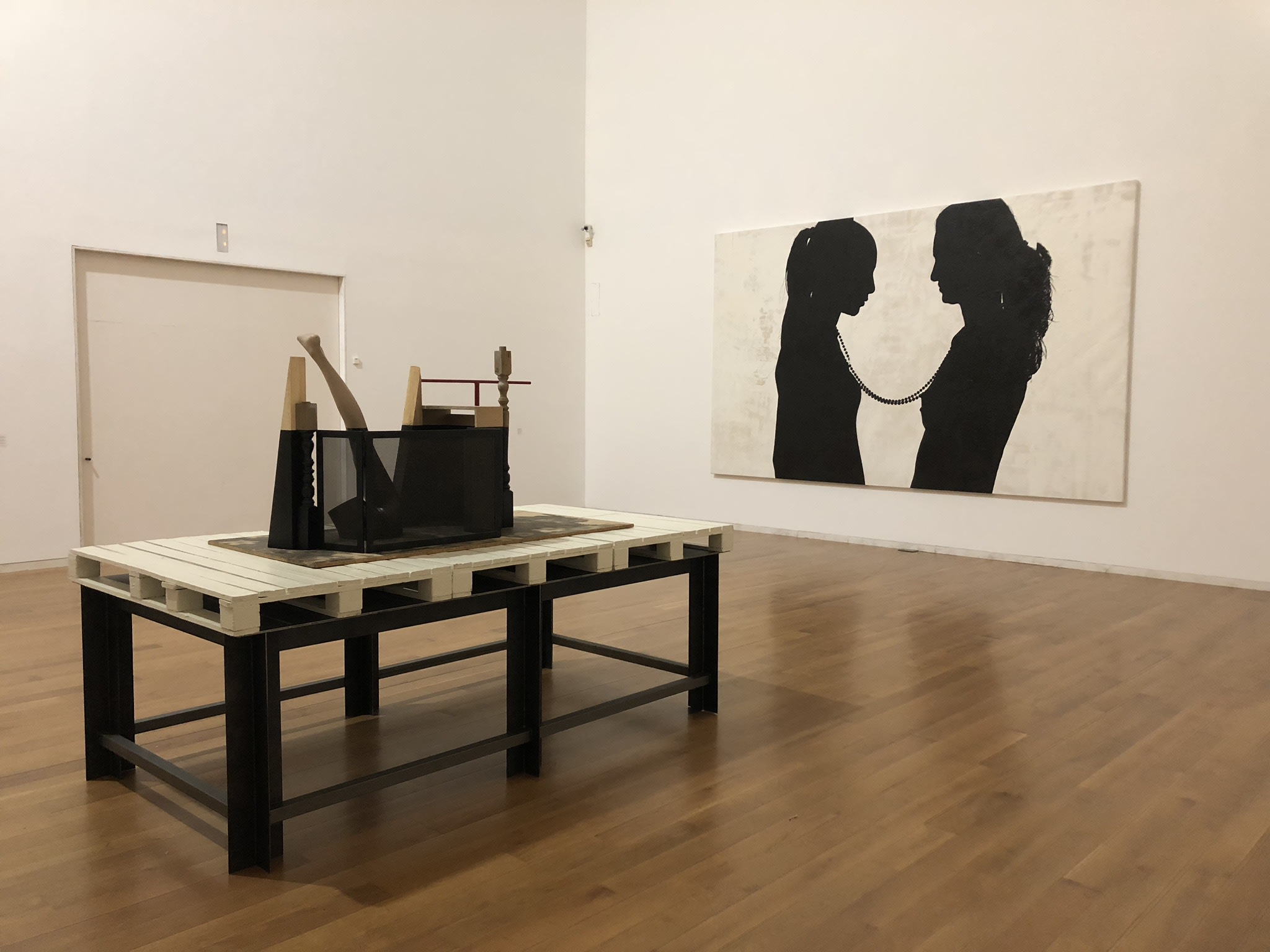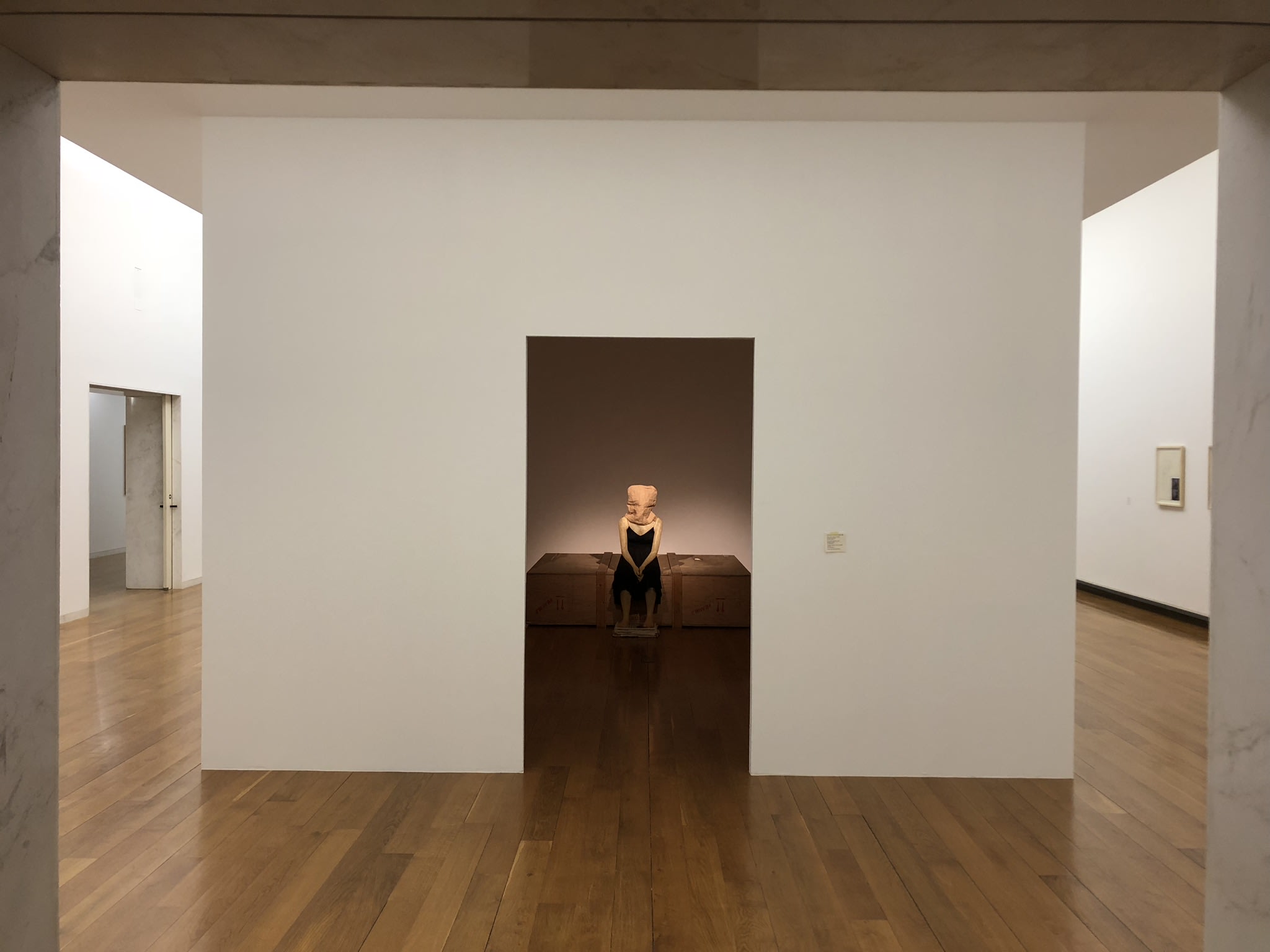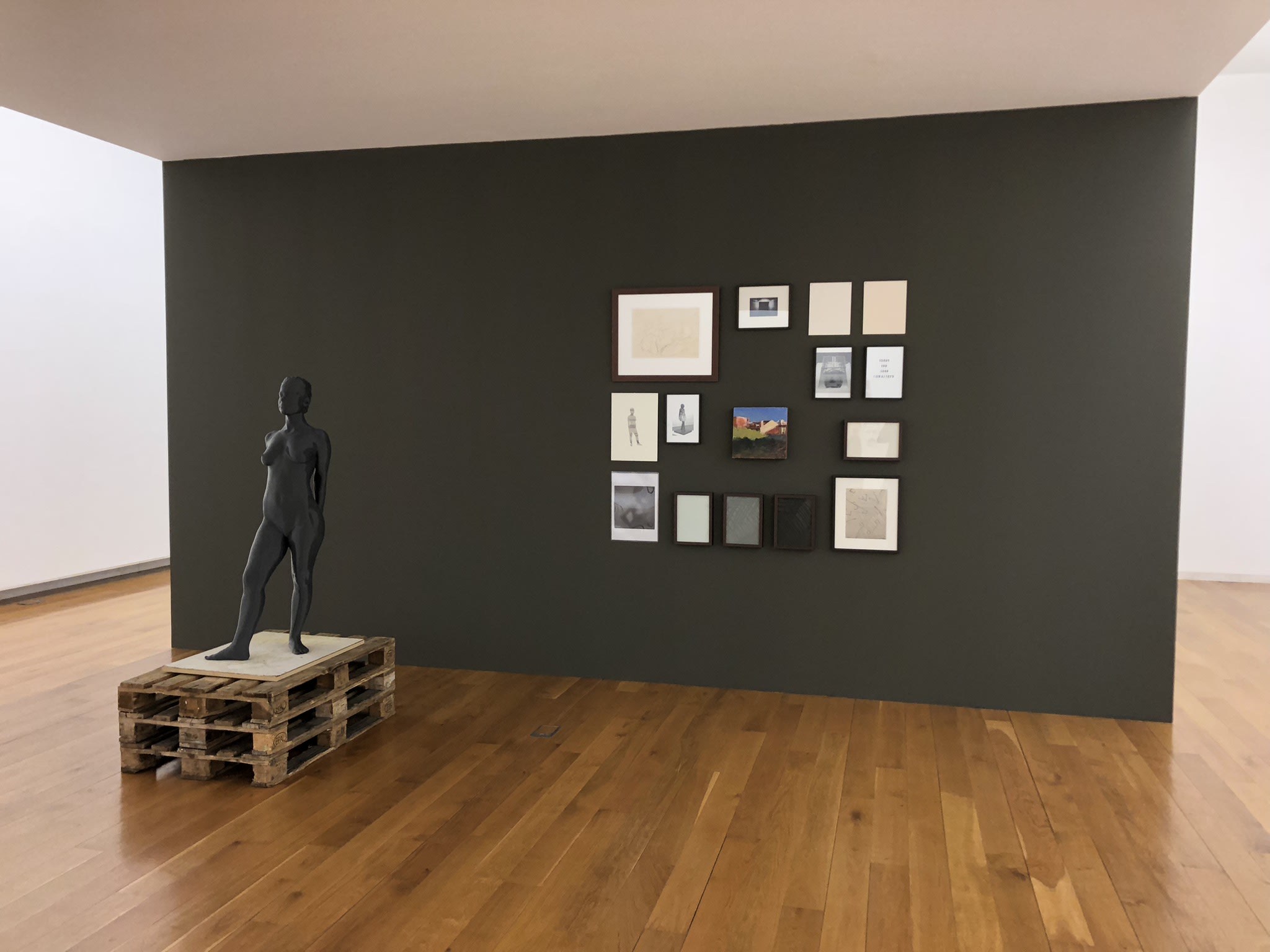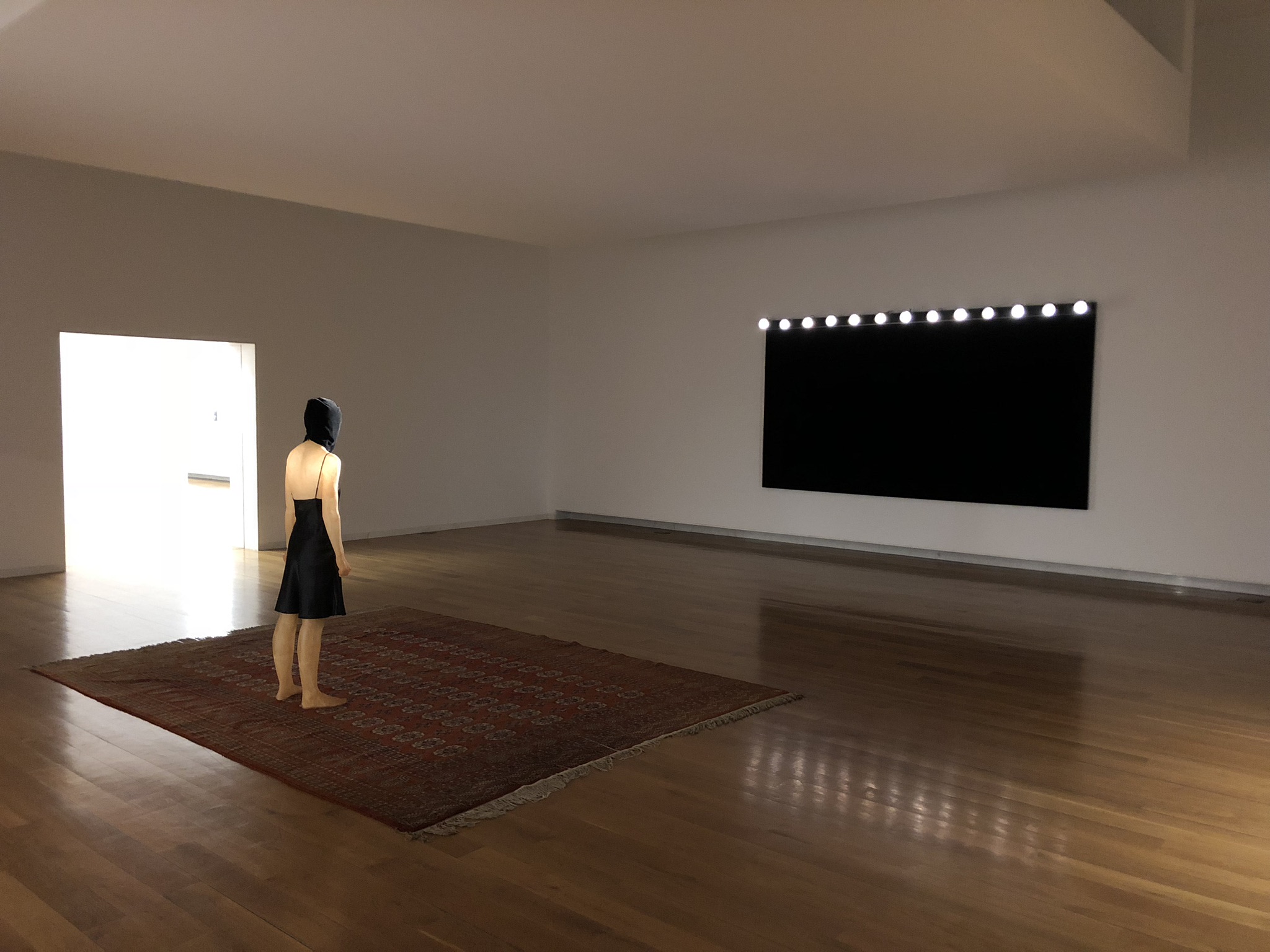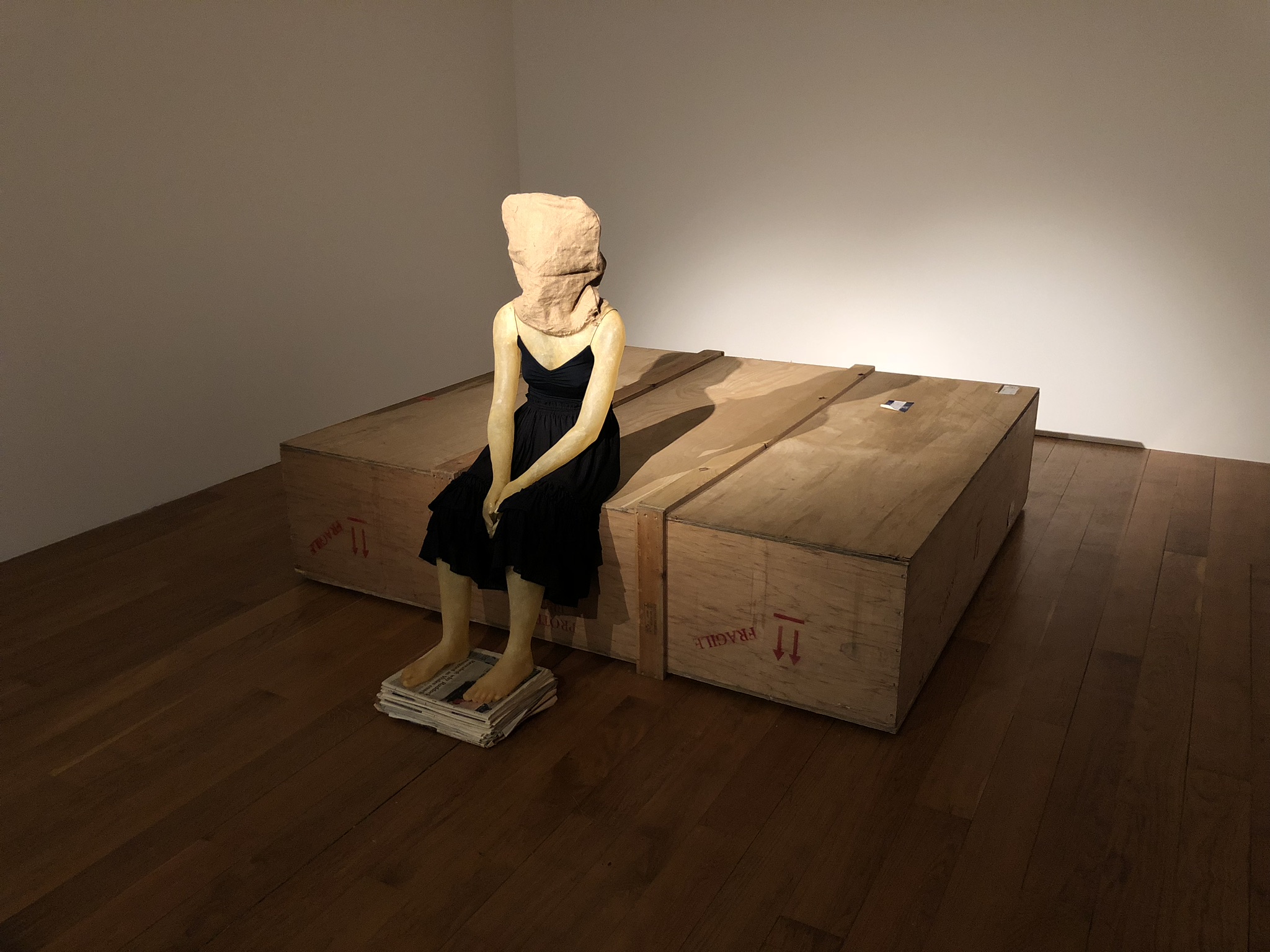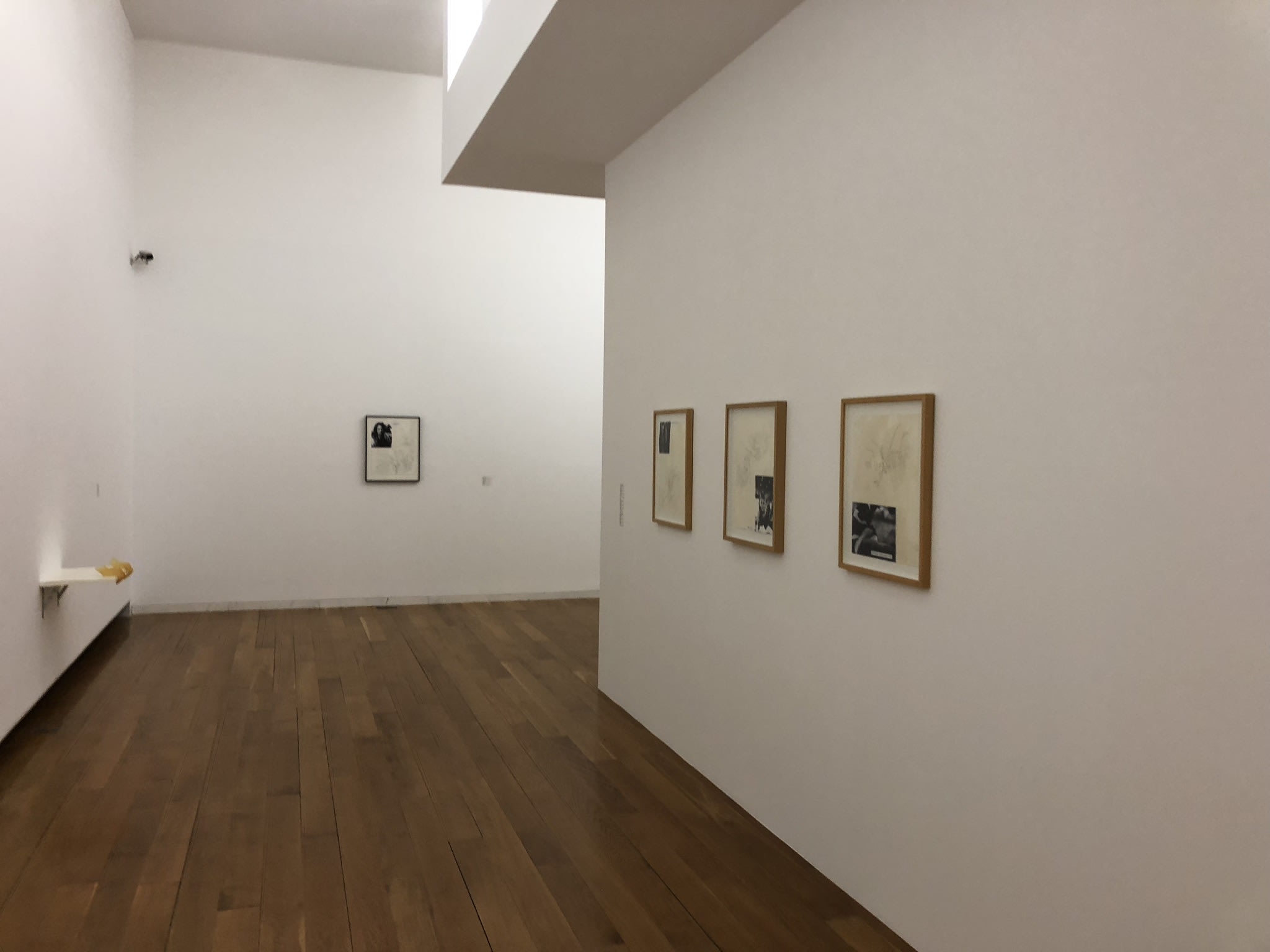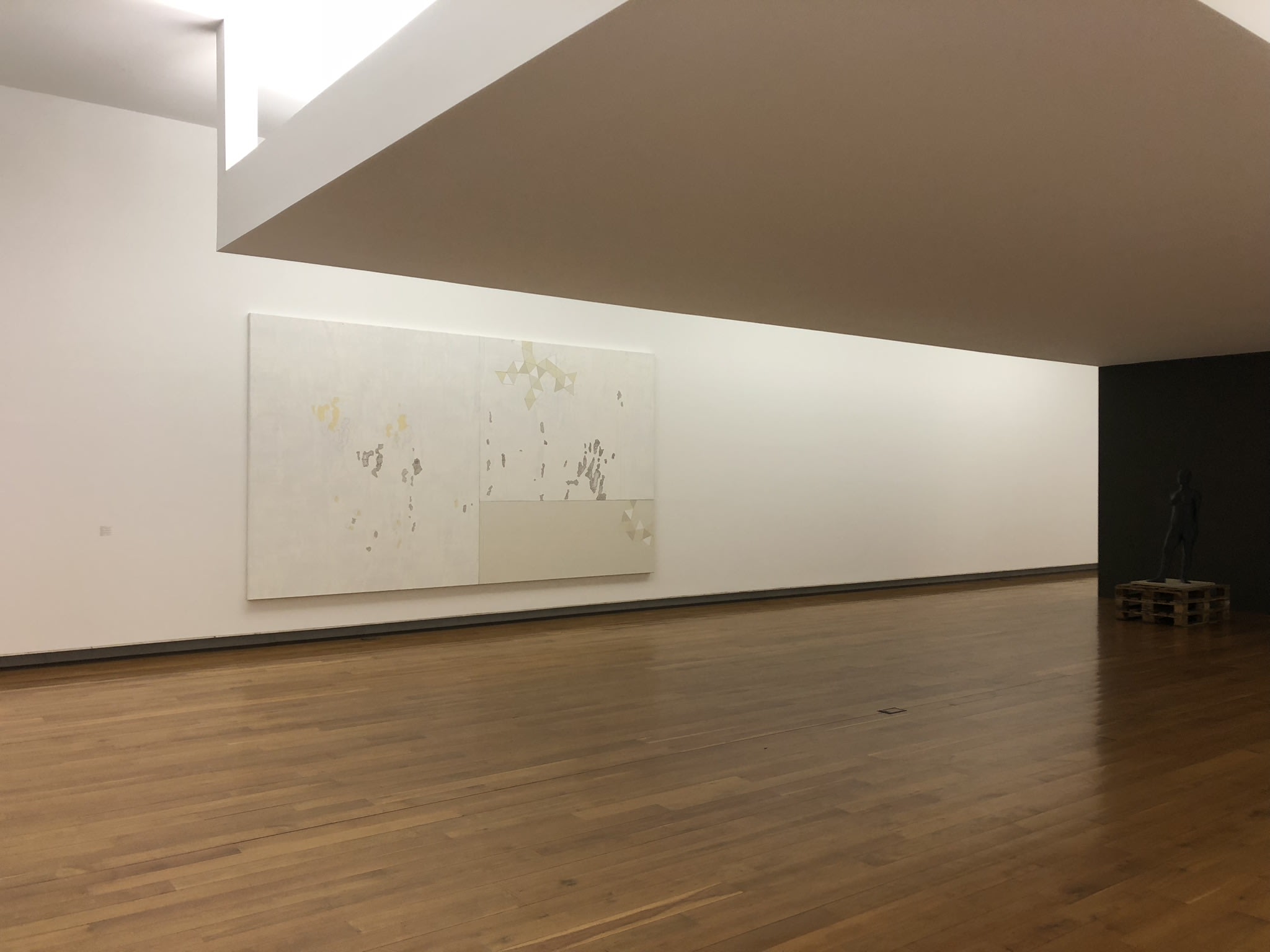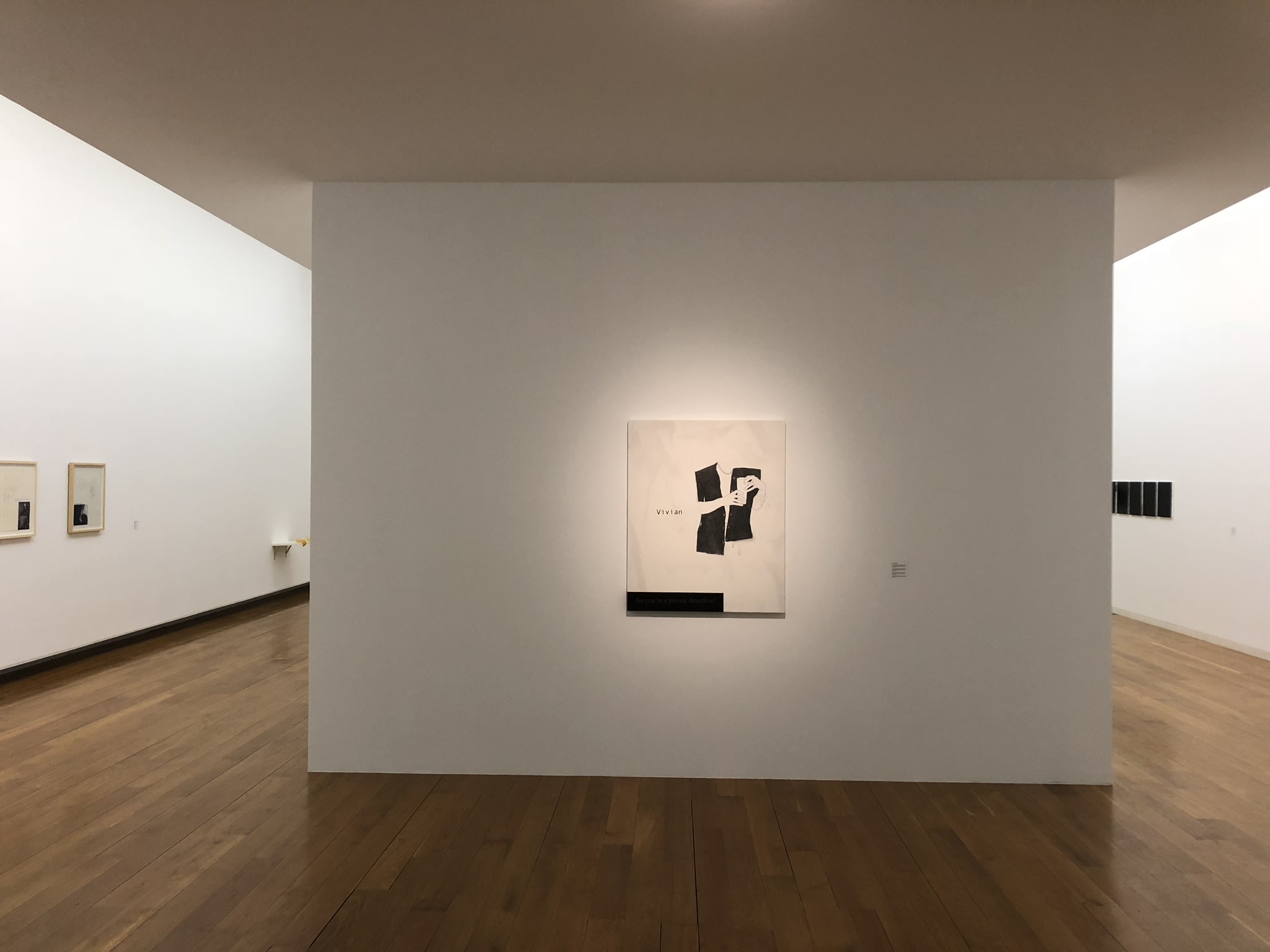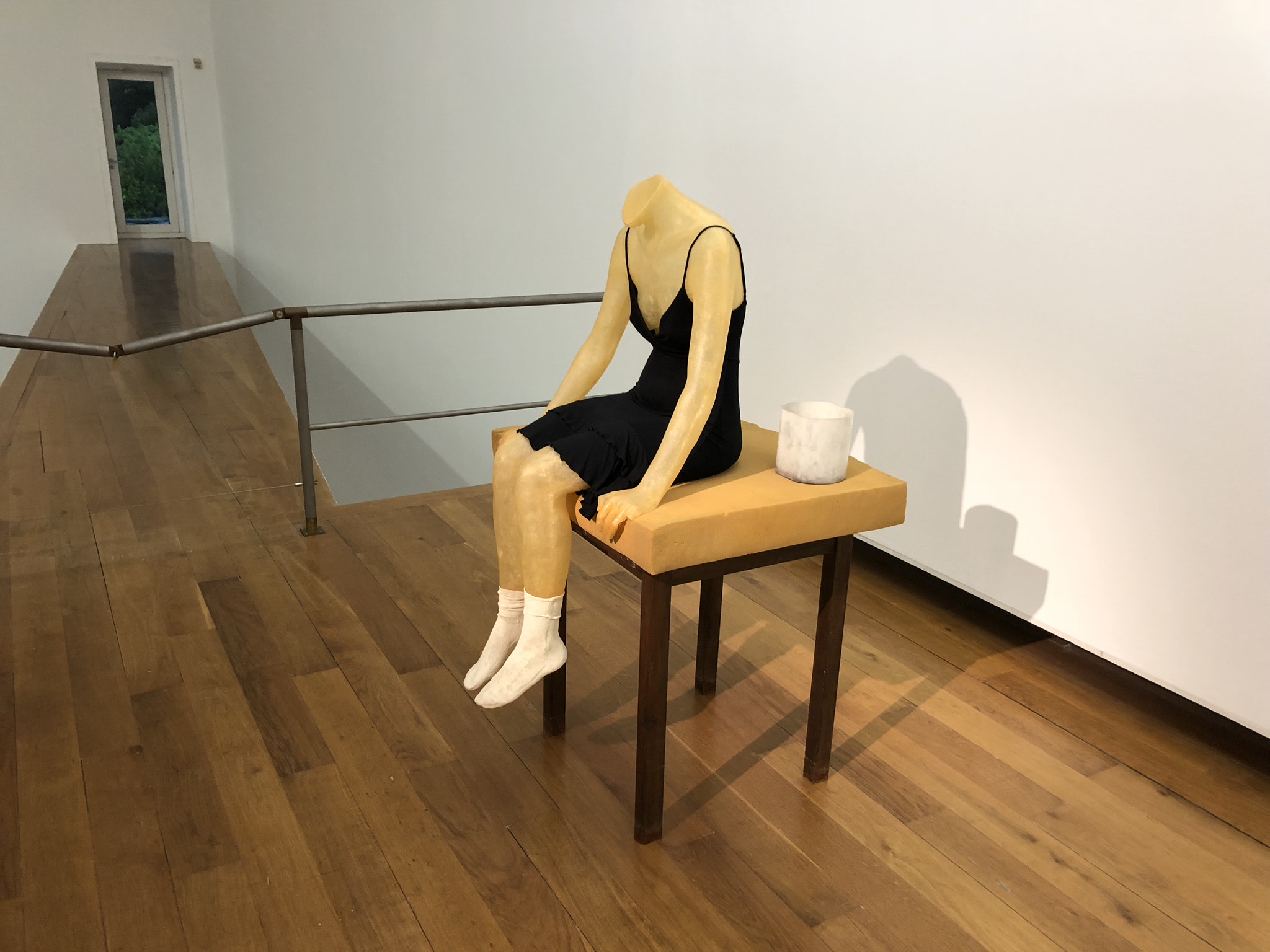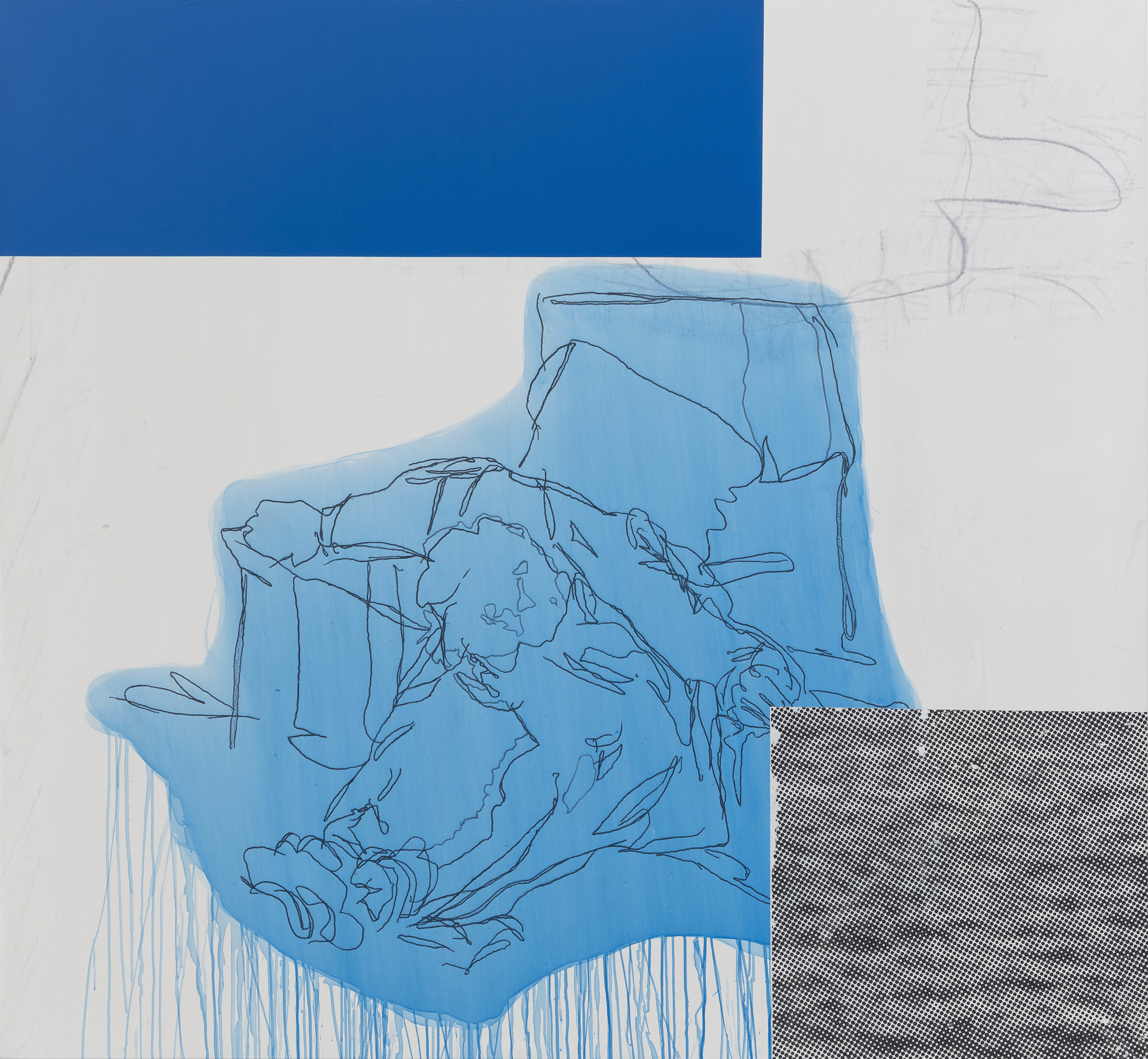Overview
The work of Julião Sarmento (Lisbon, 1948) is shaped from the borderline. Many of his works contain images of images which, while inter-related, also function independently, embracing the ambiguity of their meaning. They are microstories that take on the multiple potential of cinema, somewhere between the explicit and secret; between what is personal and what is alien. They also share a kind of suspended duration. Julião Sarmento’s entire body of work projects this cinematographic sensation because when we look at his works we always get the feeling that there is something else there that is absent, something kept offstage.
His exhibition at the CGAC is a panoramic view including works that reflect this feeling that cuts across his whole trajectory: cinematographic expression. It is not so much a question of highlighting a literal relationship—which is evident in many cases—but rather we seek to project how Sarmento has always explored this intermediate space between suspension and desire, in an interstitial space where the spectator becomes immersed, treading disturbing terrain like an foreigner, like a spectator.
The show offers samples of his special way of deconstructing the image, including works in which the empty space is conceived as the active background and a series of sculptures that summon up the idea of a scene. Also included is his most recent enigmatic artwork—paintings of a fractal dimension that refer to the world of constellations. Because in his work, reality is amplified and the spectator never knows the real image, like in cinema. All of this requires the spectator to take an active position, forcing him or her to decipher the intention of every motive and every absence, paying close attention to titles that offer clues, yet at the same time reinforce the mystery and suspension.
The title, Without, refers to the polarity that dominates all of Julião Sarmento’s work. Polarity is like a door where on one side we can read the word entrance and on the other, exit. But it’s always the same door and, depending on the side we approach it from, we see it one way or the other. Like in the works of Julião Sarmento, the title does not tell us the exact or absolute truth. Nor does it give us information about everything we can see.
Installation View: Julião Sarmento – Without, Galicia Contemporary Art Centre, Santiago de Compostela. Courtesy of the artist and Pilar Corrias, London.
Centro Galego de Arte Contemporáneo
Rúa Valle Inclán 2, 15703 Santiago de Compostela, Spain

